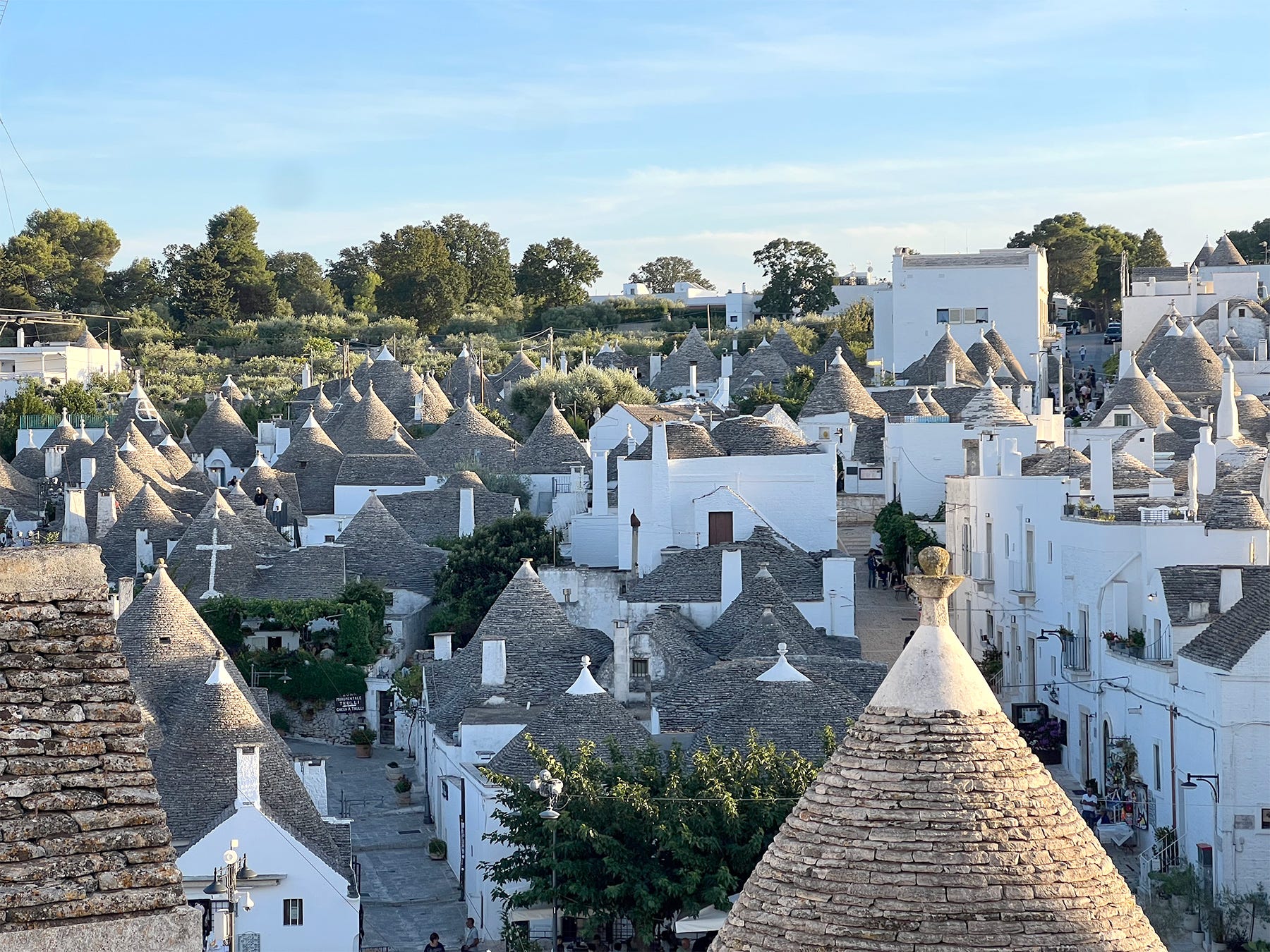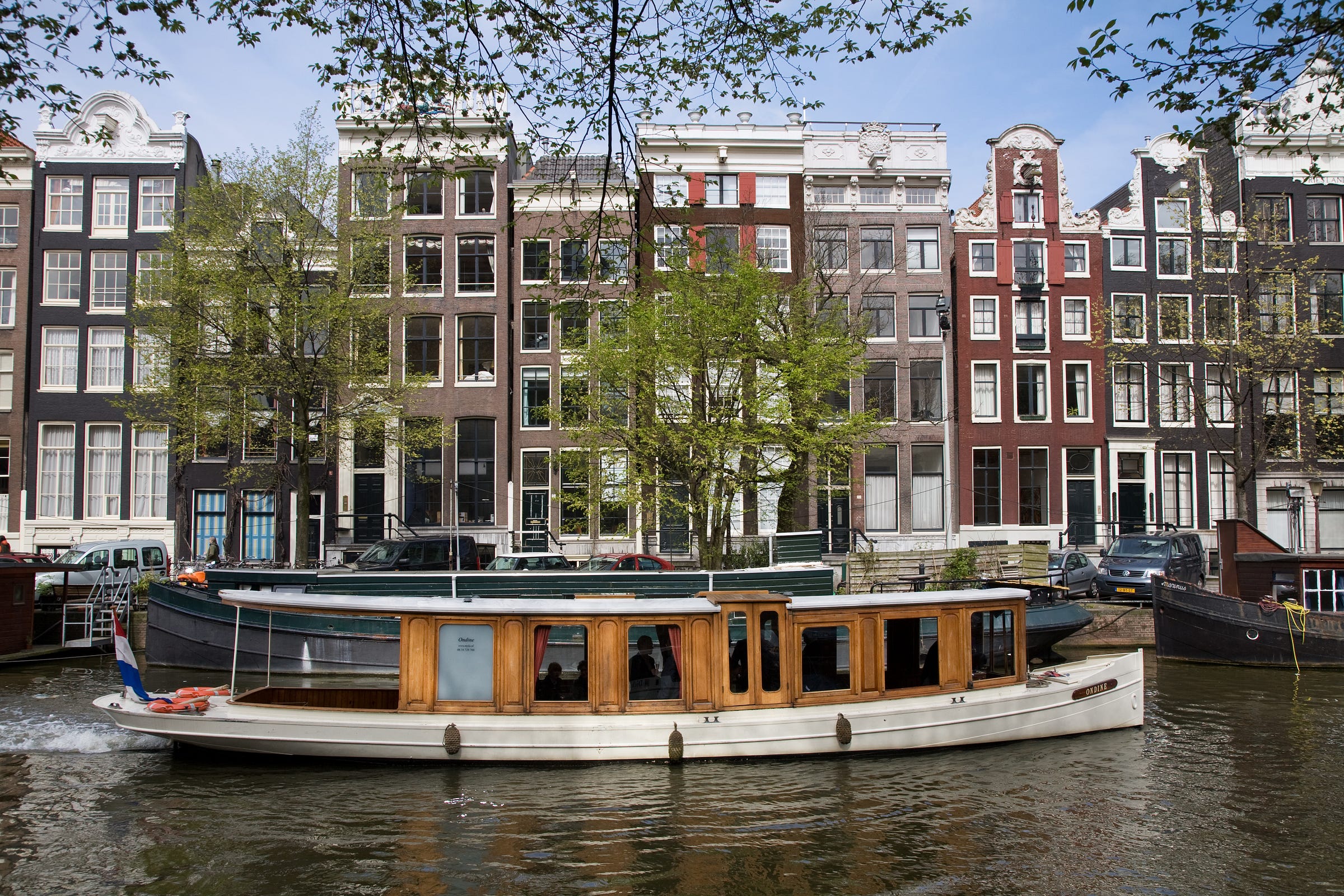Digest #16 – The architecture of tax avoidance
Rubble trouble in the Puglian town of Alberobello, where a sea of quirky buildings hides a quietly subversive history — architecture designed not for beauty, but to dodge the taxman.
I was in Alberobello recently — a small town in Puglia famed for its abundance of cone-shaped buildings.
When approaching Alberobello along the Itria Valley, you’ll start to see them on the roadside: one or two at first, sometimes as outbuildings to more conventional orthogonal structures, but then more begin to appear in clusters.
And then finally, in Alberobello, you’ll find a whole town full of them. These curiously coned structures are known as the ‘trulli’ and are typically whitewashed, conical-roofed cottages capped with some sort of ornamental symbol that looks half-religious, half-bureaucratic, and which when viewed en masse appear like a crowd of giant elves with slate hats.
In Alberobello the trulli line its slopes in neat little rows, each one with the same reassuring rhythm of curve and cone. But what is going on here? Guesses were made as to why these buildings were shaped so weirdly. Sensible suggestions included something to do with heating and cooling, or even something to do with baking. Both were wrong.
The trulli, as it happens, were originally built to avoid property taxes. In the fifteenth century, local rulers in the area imposed taxes on permanent dwellings. So, in a stroke of rural ingenuity, people simply stopped building permanent abodes. Instead, they made houses that could be taken apart almost as quickly as they were put together.
Trulli were built from roughly hewn limestone dug straight from the site, often excavated in the process of creating underground cisterns, and from boulders gathered from nearby fields and rocky outcrops. Their whitewashed walls rise directly from the limestone bedrock, built by hand using a dry-stone technique — no mortar, no cement, just careful balance and friction. (Remember this, it’s crucial info for later).
Each wall – and these are thick walls by the way, almost 1.5 metres thick – consists of two layers filled with a rubble core, punctuated only by a doorway, a few small windows, and, inside, a recessed fireplace and alcoves carved into the thick stone.
Built in two layers, the inner dome of the roof is formed from wedge-shaped stones locked together like an arch and capped with a single closing stone. Over this sits a watertight outer cone of overlapping limestone slabs — chianche or chiancarelle — laid in corbelled rings.
As a result, the whole structure rests directly on the walls, using small internal arches, or squinches, to shift from the rectangular plan below to the circular or oval roof above.
The big secret in all this, however, was in the keystone. Pull it out, and the whole thing would come tumbling down in a graceful act of fiscal defiance.
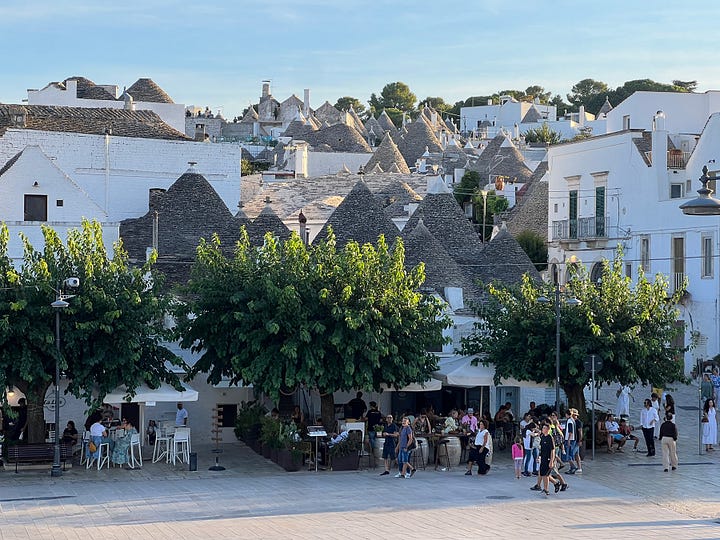
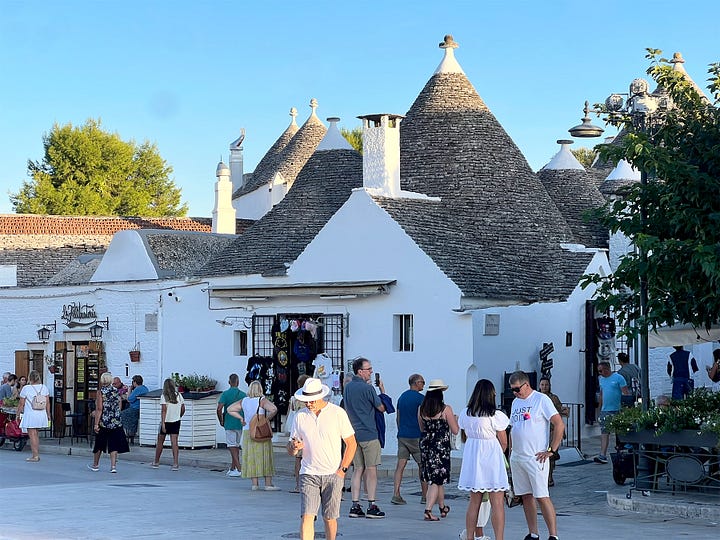

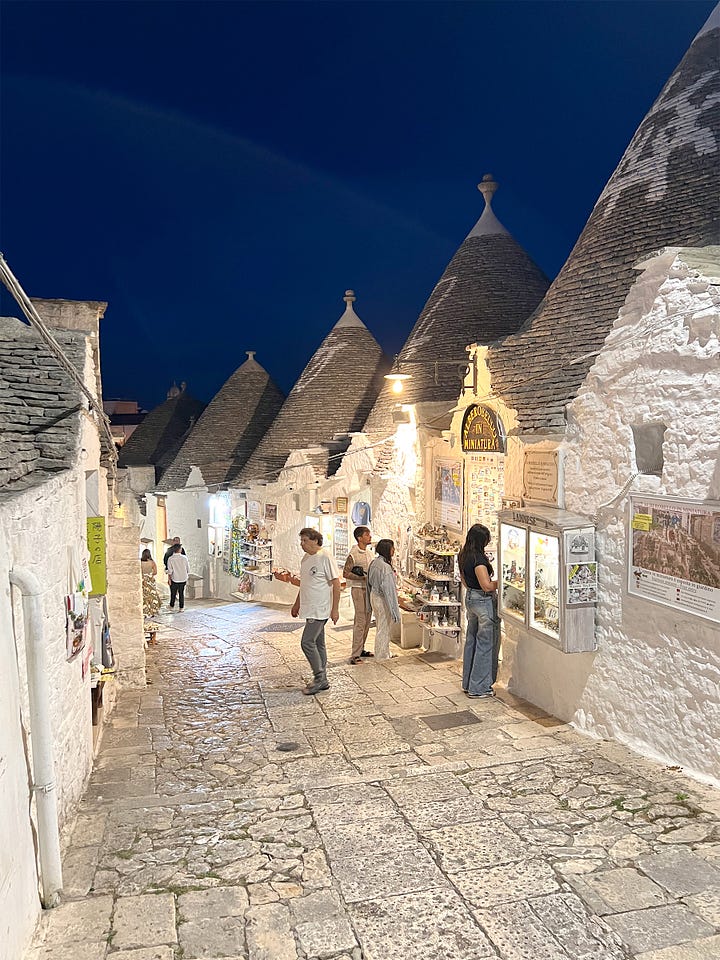
Imagine the scene: a tax inspector approaching on horseback, the sound of hooves in the distance — and suddenly the skyline of the village collapsing into harmless heaps of stone. “No permanent structures here,” the locals might have said. “Just good old rubble. Trouble? No. Rubble? Yes.”
This is architecture as loophole. Design as dissent. The very materials and methods chosen not for comfort or beauty, but for deniability.
And yet, out of that administrative game of cat and mouse came a building form now celebrated and heavily protected, listed by UNESCO, restored with care, rented on Airbnb for a small fortune. Alberobello has turned tax evasion into heritage.
But the trulli are far from unique in that respect. The built environment has always been shaped by tax law — an architectural history written, in part, by accountants.
Britain’s own story is riddled with similar manoeuvres: the window tax that left rows of Georgian houses staring blankly into space, their eyes bricked over; the hearth tax (also known as the chimney tax) drove families to share flues and fireplaces; the wallpaper tax – yes, printed/patterned paper was taxed – which made plain paper and hand-stencilled patterns a fashion statement, was born of fiscal prudence.
Taxes have always shaped our skylines more than manifestos have. You can trace it from Amsterdam’s famously narrow canal houses (supposedly taxed on frontage) to Kyoto’s townhouses (or machiya) which have what’s known locally as “eel’s beds” – long, thin plots following the same rule of taxation as in the Netherlands.
What’s funny about the trulli, though, is how they were once designed to disappear at the first sign of a tax collector, but are now protected by more layers of regulation than any modern housebuilder could stomach. Alberobello has gone from dodging rules to drowning in them. A once-temporary architecture of evasion is now permanent heritage, preserved, signposted and sold.



